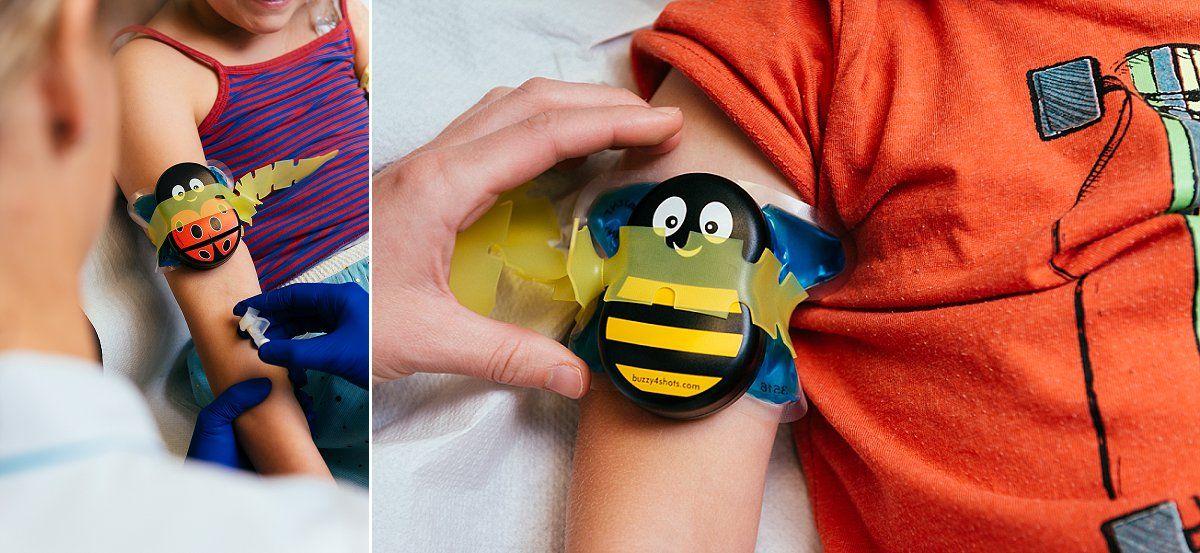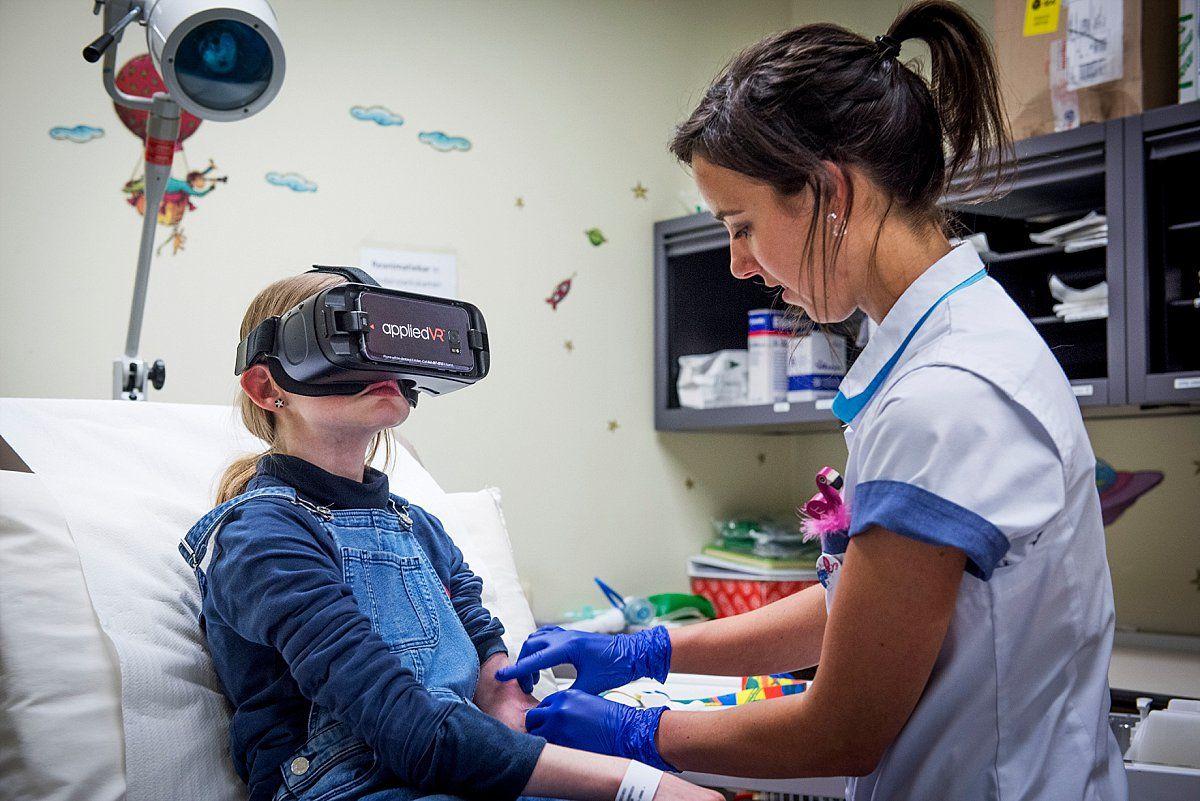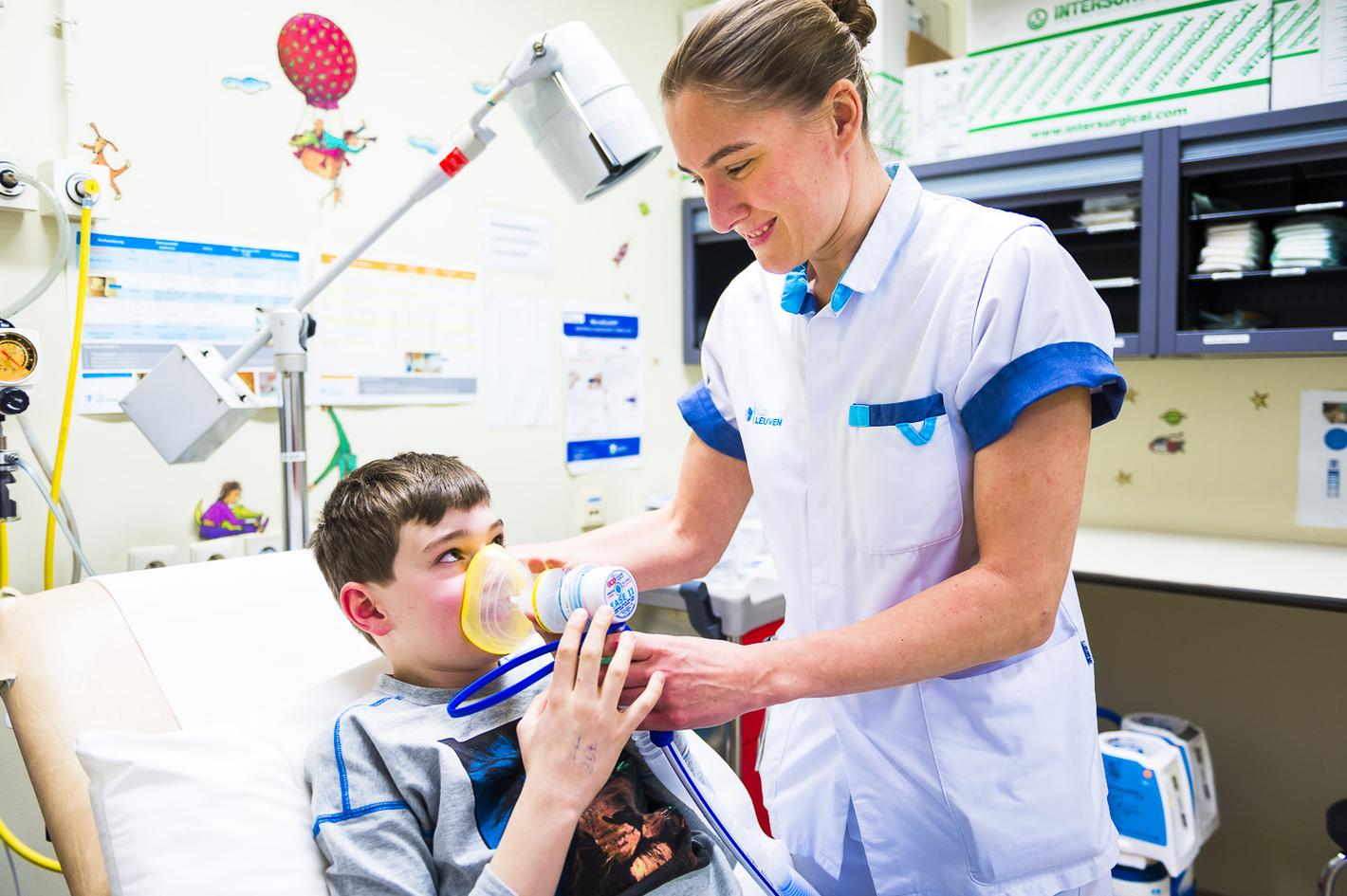Prosa team: tailored care
At the children’s hospital, children undergoing examinations or treatments are supported by nurses from the Prosa team. They are specially trained in everything related to (managing) pain in children. "Prosa" stands for procedural sedation and analgesia.
Together with the other nurses and doctors, the Prosa team assesses which methods they can use to help children in the best possible way.
Below you can read more about some of the tools they may use.
Distraction
If your child is doing something else during the examination, they will automatically think less about the pain.
They can, for instance, watch television, play a game or watch a video on a smartphone, listen to a story or music, sing, etc.
Skin-numbing patches or cream
Patch or cream
A patch or cream (Emla®) is used in children from birth to ease pain during:
- blood sampling
- inserting an IV line
- accessing a port catheter
- lumbar puncture
- removal of molluscum contagiosum
The patch starts working after at least 60 minutes and remains effective for up to two hours after it is removed.
Patch with warming sensation
The patch (Rapydan®) gives a warming sensation and is used in children from the age of three to reduce pain during:
- blood sampling
- inserting an IV line
The patch starts working after at least 30 minutes and remains effective for up to two hours after it is removed.
A maximum of 2 patches may be used at the same time.
Buzzy: little bee or ladybird
Buzzy is a little bee or ladybird with a vibrating function and ice-cold wings that block the pain signal.
We place Buzzy above the injection site for blood sampling or inserting an IV line. For subcutaneous or intramuscular injections, Buzzy is placed directly on the injection site.

Virtual reality headset (VR headset)
The virtual reality headset (VR headset) helps distract children from the age of 5.
When your child wears our VR headset, it feels as if they’re no longer in the hospital for a moment.

Sugar water (sucrose)
Sugar water or sucrose is used in babies under 1 year of age.
Combined with sucking on a dummy, sugar water has a pain-relieving effect. It is best administered 2 minutes before the painful stimulus.
Breastfeeding
In babies, an injection can be given during breastfeeding.
The sucking reflex, the milk and the comfort of mum’s arms all help reduce stress during the procedure.
Nitrous oxide (laughing gas)
Nitrous oxide helps children to relax. It reduces anxiety and sensitivity to pain, while keeping the child awake and responsive.
Nitrous oxide can be used from the age of 2.
- Between the ages of 2 and 4, we use a green balloon.
- From the age of 4, we use a mask with a valve (see photo).
Nitrous oxide starts working after 3 minutes and wears off quickly – around 2 to 3 minutes after the mask is removed.
It may only be administered on a doctor’s prescription and with written consent from the parents.
See the information leaflet (in Dutch) on administering nitrous oxide to children.

On the importance of preventing pain
Pain scales
Just like adults, children can use pain scales to indicate how much pain they feel. For children under the age of 7, you can’t ask them to rate their pain from 1 to 10 – there are special pain scales for them.
In young children, we look at parameters such as facial expressions, restless arm movements or how long it takes to comfort them.
Preventing trauma and chronic pain
More and more studies are showing the long-term effects of untreated pain in children. If a child’s pain is not properly addressed, this can lead to lifelong trauma and chronic pain in later life. Children who experience pain at an early age may also become more sensitive to pain stimuli later on.
Is your child extremely anxious?
If your child is extremely anxious about needles or about being treated by a doctor or nurse, we advise you to contact us in advance.
Send an email to the Prosa team. Please be sure to include the following in your message:
- your child’s name
- your child’s date of birth
- your phone number
This allows us to schedule a consultation and find the best approach for your child together.
Questions, more information or suggestions
If you have any questions, would like more information or have suggestions, you are always welcome to contact the Prosa team.